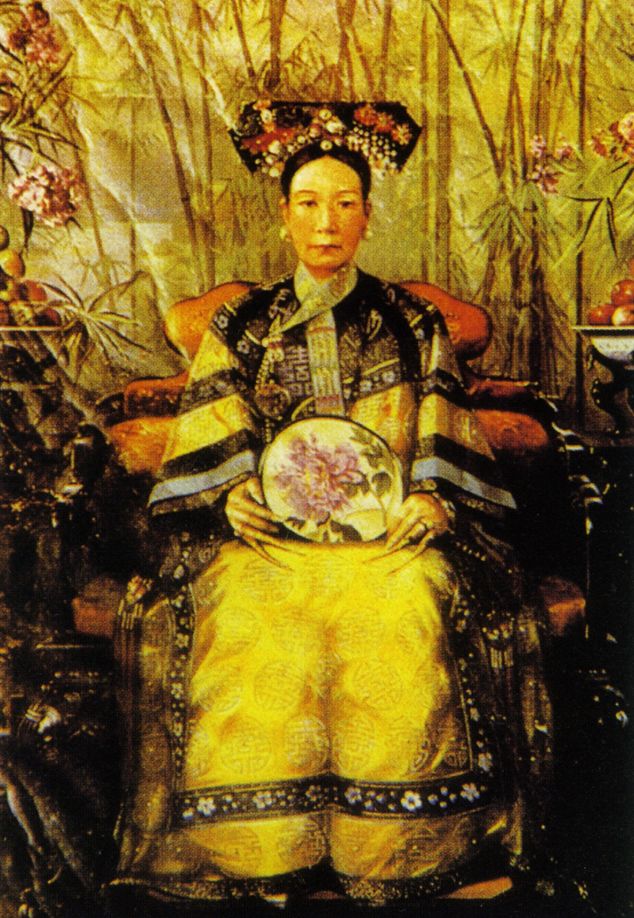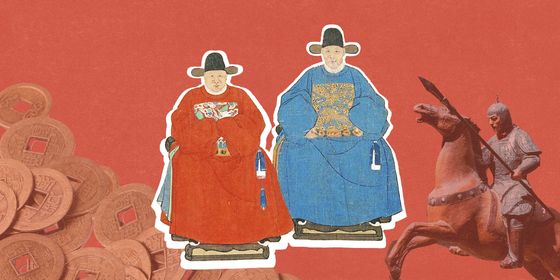The symbolism of long nails and nail guards, from Confucius to Empress Cixi
In “Song in Midnight (《子夜歌》),” a verse by the female poet Chao Chai (晁采) of the Tang dynasty (618 – 907), a lonely woman leans by an open window, looks wistfully outside, and longs for the lover she hasn’t seen for an age. When contemplating how best to show her beloved the depth of her feelings, the narrator doesn’t resort to love letters or jewelry, but instead gives the most heartfelt gift of all—her well-groomed fingernails, trimmed off and sent to her lover in a delicate silk bag.
In ancient China, this was a serious display of affection, as fingernails carried great symbolism. The Classic of Filial Piety (《孝经》), a compilation of discussions between Confucius and his disciples about filial piety, attributed to Confucius and written in the Spring and Autumn period (770 – 476 BCE ), records that “the hair, skin, and body come from one’s parents and we must not harm them; this is filial piety.” Portraits of Confucius also often depict the famous thinker with extremely long nails.
Though it’s unclear exactly when Chinese gained the habit of growing their nails long, there are stories of the significance of fingernails dating back to the Warring States period (475 – 221 BCE). In one tale recorded in the Hanfeizi (《韩非子》), a Qin dynasty (221 – 206 BCE) political and legal text attributed to the philosopher Han Fei, the ruler of the Han state in the Warring States period, Marquis Zhao of Han (韩昭侯), tested the honesty of his subordinates by claiming he had lost one of his fingernails and was in a hurry to find it. Upon seeing the anxious expression on the Marquis’s face, many of his subordinates cut off their own nails and presented it to the ruler, claiming they had found Zhao’s nail. This proved they would resort to dishonest means to gain political favor, and the Marquis stayed away from those subordinates in future.
Both men and women from the upper classes, especially literati, grew their nails long as a symbol of wealth: Long nails indicated that their owners did not have to do manual labor. But despite the consensus in ancient China that nails were important as part of one’s body, some leaders proved their commitment to the realm by sacrificing their nails. According to Master Lü's Spring and Autumn Annals (《吕氏春秋》), written in the Warring States period, Chengtang (成汤), the first king of the Shang dynasty (1600 – 1046 BCE), cut off his hair and fingernails as a sacrifice to heaven to beg for rain during a drought across his territory.
The importance of nails also led to traditions and superstitions around their trimming. In the Tang dynasty, renowned doctor Sun Simiao (孙思邈) concluded in Essential Formulas for Emergencies Worth a Thousand Pieces of Gold (《千金药方》) that it’s auspicious to have one’s fingernails cut on five particular days of each year, calculated according to the ancient calendar used at that time.
When someone died, their nails would be trimmed and buried with them. According to the Book of Rites (《礼记》), a collection of texts on the ritual principles in the Zhou era (1046 – 256 BCE), the fingernails and nail clippings would be placed in the coffin of the deceased or buried separately alongside the dead. It represented a filial gift to one’s parents and ancestors in the afterlife. Fingernails could also serve as an object of affection, like in the Qing dynasty (1616 – 1911) novel Dream of the Red Chamber (《红楼梦》), when a dying maid chooses to bite her long nails down and gift the clippings to her master to show her love.
Apart from filial consideration, women also beautified and accessorized their nails. Nail polish was made from a combination of egg white, beeswax, and flower petals like roses to provide color. This nail art reached its peak during the Tang dynasty when Yang Guifei (杨贵妃), the favorite concubine of Emperor Xuanzong and know as one of the four beauties of ancient Chinese history, was rumored to have been born with dyed red nails, leading to a royal court fad for nail polish with balsam.
Nails were considered so precious, and took so long to grow, that protecting them was also of great importance. In the Ming (1368 – 1644) and Qing dynasties, nail guards or “护指 (hù zhǐ),” literally “finger covering,” used as protectors and accessories by upper class women, became popular decorations.
Usually made from metal, shells, and even jade, these curved, talon-like objects were decorated with various designs and motifs. Peonies were a popular choice, as they symbolized good luck and wealth. These nail guards were mostly worn on the ring finger or little finger by women of the imperial court to show their high status.
The most famous wearer of these nail guards was perhaps Empress Dowager Cixi, de facto ruler of the Qing dynasty from 1835 to 1908. Cixi was infamous for her striking six-inch-long nails, which allegedly cost her over 10,000 taels of silver (over 30 million RMB today) a year to maintain. Groomed, painted, dyed, and protected by lavish nail guards, Cixi’s fingernails became a symbol of the wasteful, decadent, and detached rule of the Qing elite in the later years of imperial rule—traits which ultimately helped hastened the dynasty’s demise.
Hong Rengan (洪仁玕), a leader of the Taiping Rebellion against Qing rule in the mid-19th century, criticized the obsession with long fingernails as “extravagant and dissipated” in his essay ”A New Treatise on Aids to Administration (《资政新篇》).”
Hong seems to have eventually got his wish, with the nail protectors fading away after the fall of the Qing dynasty in 1911. Though nail polish and manicures remain all the rage today, its probably best not to copy Chao Chai in sending nail clippings as a romantic gesture for a loved one.














